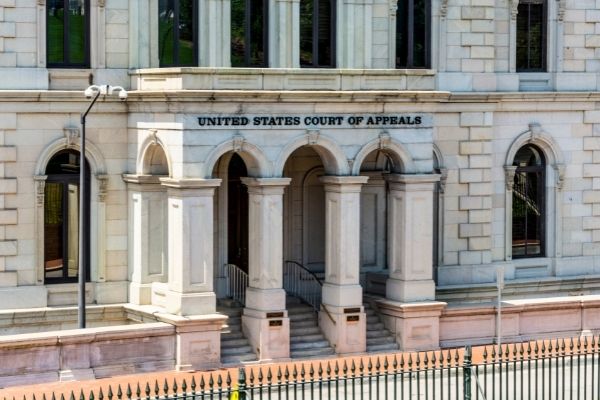Top Federal Crime Lawyer: Specialized Legal Protection for Federal Offenses
Top Federal Crime Lawyer: Specialized Legal Protection for Federal Offenses
Blog Article
Demystifying the Refine of Federal Appeals: What You Required to Know
Browsing the intricate realm of federal charms can usually appear like traversing uncharted waters for those unknown with the procedure. Comprehending the subtleties of appellate court territory, the intricacies of filing a notice of appeal, presenting a compelling short, and making a convincing oral disagreement are crucial parts that can significantly affect the result of a case. By untangling the layers of intricacy surrounding government appeals, individuals can gain a clearer insight into the mechanisms that govern this critical point of the legal system.
Understanding Federal Appeals Process
Looking into the detailed world of the government charms procedure introduces a organized and methodical trip with the judicial system. Federal charms act as an essential mechanism for reviewing choices made by reduced courts. Comprehending this process is important for any person involved in legal process at the government level.
The procedure commonly starts with a party disappointed with a reduced court's ruling submitting a notification of charm. This sets off a review by a greater court, where a panel of judges assesses the lawful arguments offered by both celebrations. Briefs describing the lawful reasoning behind each event's position are sent, and oral arguments might be heard to clarify intricate problems.
The appellate court's decision is based on an extensive evaluation of the lower court's proceedings and the arguments offered. As soon as the appellate court gets to a decision, it can verify, turn around, remand, or customize the lower court's ruling, giving quality and finality to the legal dispute.
Appellate Court Jurisdiction Clarified
Appellate court jurisdiction refers to the extent of situations that a certain appellate court has the power to make a decision and evaluate upon. Unlike test courts that hear situations for the first time, appellate courts are limited to reviewing decisions made by reduced courts.
Appellate courts have jurisdiction over certain types of situations, usually those involving legal mistakes, procedural problems, or inquiries of law instead of valid conflicts. The territory of appellate courts is generally described in laws and laws that regulate the court system. Recognizing appellate court jurisdiction is vital for parties associated with the allures procedure as it determines whether a situation is qualified for testimonial and the extent to which the appellate court can intervene in the reduced court's choice.
Declaring a Notice of Allure
The initial action in starting the government allures process involves filing a Notice of Charm with the ideal appellate court. This crucial file formally informs the court and the other celebrations associated with the instance that the appealing event plans to look for a review of the lower court's decision. Filing a Notice of Allure is a strict step-by-step requirement that establishes the appellate procedure moving.
When preparing the Notification of Charm, it is crucial to make certain conformity with the details rules and standards of the pertinent appellate court. federal appeal lawyers. The file should generally include details such as the case name, the reduced court's name, the day of the judgment being appealed, and a concise declaration indicating the premises for the appeal

Rundown and Dental Debate
In the appellate procedure, presenting composed briefs and participating in oral disagreements play pivotal functions in supporting for the appealing party's placement before the appellate court. Briefs are detailed lawful documents that lay out the events' debates, legal authorities, and analysis supporting their settings. These written entries provide the court with an in-depth understanding of the realities of the case, the appropriate regulation, and why the appealing event believes the lower court's choice must be rescinded.
Following the submission and evaluation of the briefs, dental debates offer the celebrations a chance to more clarify their placements, address any type of concerns the appellate courts might have, and emphasize bottom lines from their created briefs. Oral arguments are a chance for the attorneys to convince the judges with spoken campaigning for and actions to questions from the bench.
Both the created briefs and dental debates are crucial components of the appellate process, allowing events to provide their situation completely and compellingly before the appellate court. - federal crime lawyer
Obtaining the Appellate Court Choice
Upon conclusion of oral disagreements and submission of written briefs, the next pivotal stage in the appellate procedure entails waiting for the crucial judgment from the appellate court. This period of anticipation can be loaded with a mix of anxiety and hope for events associated with the charm. The appellate court's decision is usually provided in a written layout and lays out the court's final thoughts on the legal issues presented, the thinking behind their decision, and the judgment rendered. The moment framework for receiving the appellate court's choice can differ, however courts strive to give prompt resolutions. When the choice is released, celebrations must meticulously review the court's judgment to comprehend the outcome and establish any type of further actions that may be essential. Whether the appellate court verifies, reverses, or remands the reduced court's decision, recognizing the ramifications of the ruling is critical for all celebrations involved in the appellate procedure. Quickly examining and understanding the appellate court's decision is crucial in navigating the following steps in the legal process.
Final Thought
Understanding the appellate court jurisdiction, filing a notice of charm, preparing briefs, and providing oral arguments are all important components of this process. Ultimately, receiving the appellate court choice can give quality and resolution to lawful disagreements.
As we advance from comprehending the federal appeals process to exploring the complexities of appellate court jurisdiction, a fundamental aspect comes to light regarding the authority and restrictions of these greater courts in the legal landscape. Appellate court jurisdiction refers to the scope of instances that a certain appellate court has the power to examine and choose upon. Unlike test courts that listen to cases for the very first time, appellate courts are limited to reviewing choices made by lower courts. Understanding appellate court territory is vital for celebrations involved in the allures procedure as it identifies whether an instance is qualified for review and the level to which the appellate court can interfere in the lower court's choice.

Report this page